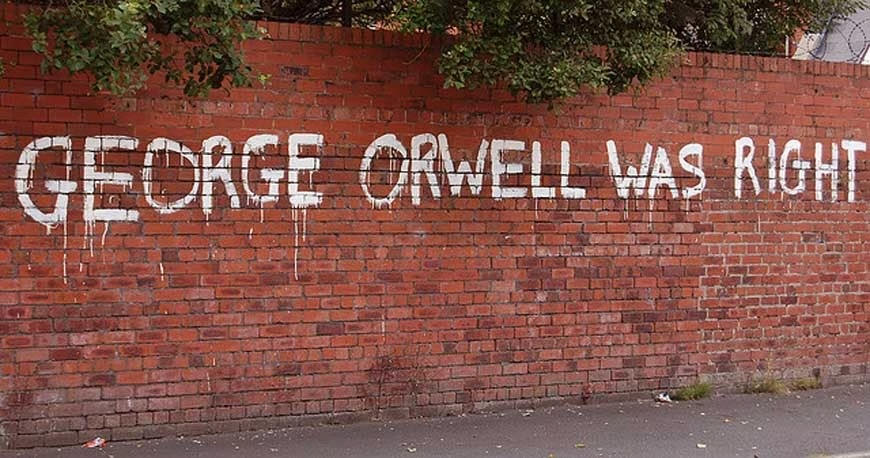Tone: Appreciative with some Spunk.....
Objective: To make my audience feel as inspired by this commercial as I did.
Tone: Appreciative with some spunk
The Mac 1984 Commercial Campaign: A Landmark in the History of Branding
Please watch the commercial first. The article will make much more sense if you’ve seen the commercial than if you haven’t.
On desktop, the video is embedded to your right. On mobile, it’s at the bottom. Here is a quick link:
https://youtu.be/VtvjbmoDx-I?t=7
The Mac 1984 campaign revolutionized marketing. Completely. It flipped it on its head. It was so powerful that it made advertisers and marketers everywhere sit back and wonder, “How can I pull off something like that?” This epic commercial TNTed (shook) established guidelines for branding, changed the rules of how to engage customers, and, most importantly, established itself as the Masterclass for Marketers.
This article explores why the 1984 campaign was as pivotal to branding as the dawn of the personal computer was to technology.
Rebranding Branding
Before Mac, computer ads—online and offline—were purely functional. They served a purpose and did it well. But the 1984 commercial took “traditional branding” by the hand, then tossed it out of the helicopter. Where there were once lists of features and prices, there were now user experiences. The 1984 commercial established that they were elite and standing proudly at the top.
And this success? It all came from storytelling rather than boring data and facts.
That was the best part. It was like having to create a new genre just because one band—one good enough to justify the need—was nothing like what had come before (Linkin Park). The point is, Mac’s 1984 commercial created its own genre and changed EVERYTHING about branding and marketing.
Hollyism: Change doesn’t knock gently on the door. No, you have to knock on that mysterious door and keep knocking until the door eventually breaks and you get to explore something new before getting out the shopvac. That’s evolution.
Visual Symbolism: The Power of Imagery
The 1984 commercial’s dystopian imagery is striking. Black-and-white drones, not an ounce of individualism between them, all marching in unison as directed by Big Brother. You could tell at a glance this was a commercial intended to describe, visually, an Orwellian society under totalitarian rule.
Then, something colorful catches your eye. It’s a woman, running toward the theatre with bright red shorts and a white tank top. And she’s packing heat: a gigantic hammer that she shotputs into the “cinema screen,” effectively ending playtime for the day. Seriously, there was so much symbolism in the commercial, but the screen smash was by far the most resounding.
Apple’s message: we’re here to inspire change and eliminate conformity.
Branding as Thought Control
The 1984 campaign emphasized brand identity over product specifics. This was simply not done at the time. Mac was the first. Apple became synonymous with innovation and rebellion—something it still espouses today.
The 1984 commercial tagline, “On January 24th, Apple Computer will introduce Macintosh. And you’ll see why 1984 won’t be like 1984,” suggested that without Apple, society risked an Orwellian fate. Powerful stuff, right? Through striking visuals and a memorable slogan, Mac cultivated unquestionable loyalty from that one ad alone. And they’ve got the money to produce a few more.
Marketing Mastery
Mac broke ground with simultaneous, multi-channel marketing, in all formats. The 1984 Super Bowl ad reached millions, creating an immediate cultural phenomenon.
The seeds were planted, and Apple grew. And grew some more.
Emotional Impact
Mac’s ads embed the product(s) into the consumer’s reality. “The best books… are those that tell you what you already know,” thank you, Sir Orwell, and the best ads do the same. They convince consumers that what they needed in life—what was missing, what was keeping them from being happy—was a Mac. Apple went all-out psychologically, their ads became primarily emotion-based rather than highlighting what’s new, improved, or different. They quit making commercials and started making moments. Their focus and, as such, their vision: hope, rebellion, and the desire for freedom.
Enduring Influence
The Mac 1984 campaign shifted marketing from promoting a product or products to perception control, flipping modern marketing on its head. Again.
Apple’s storytelling approach remains a benchmark for all those in the Branding, Marketing, and Advertising realms, proving that great branding is about showing viewers a better reality.
Conclusion
The Mac 1984 campaign was huge. It was a giant sledgehammer to the face of the Marketing Industry. That one commercial redefined consumer engagement and branding. Flat-out, it changed everything. The rebellious spirit that Apple chunked in our faces—with a sledgehammer—will always remain one of its core branding success stories.
